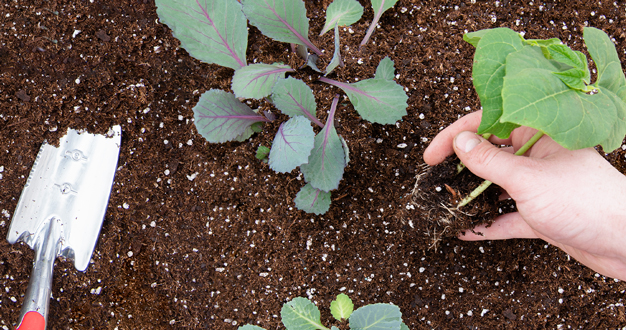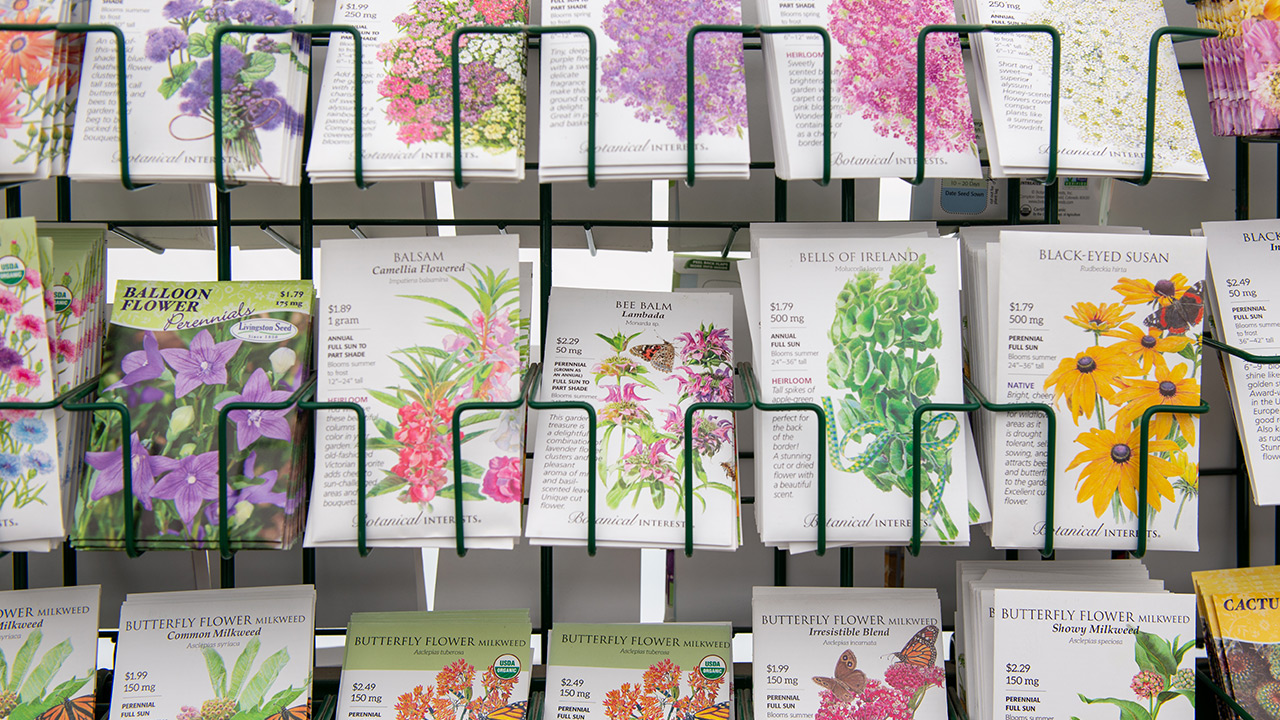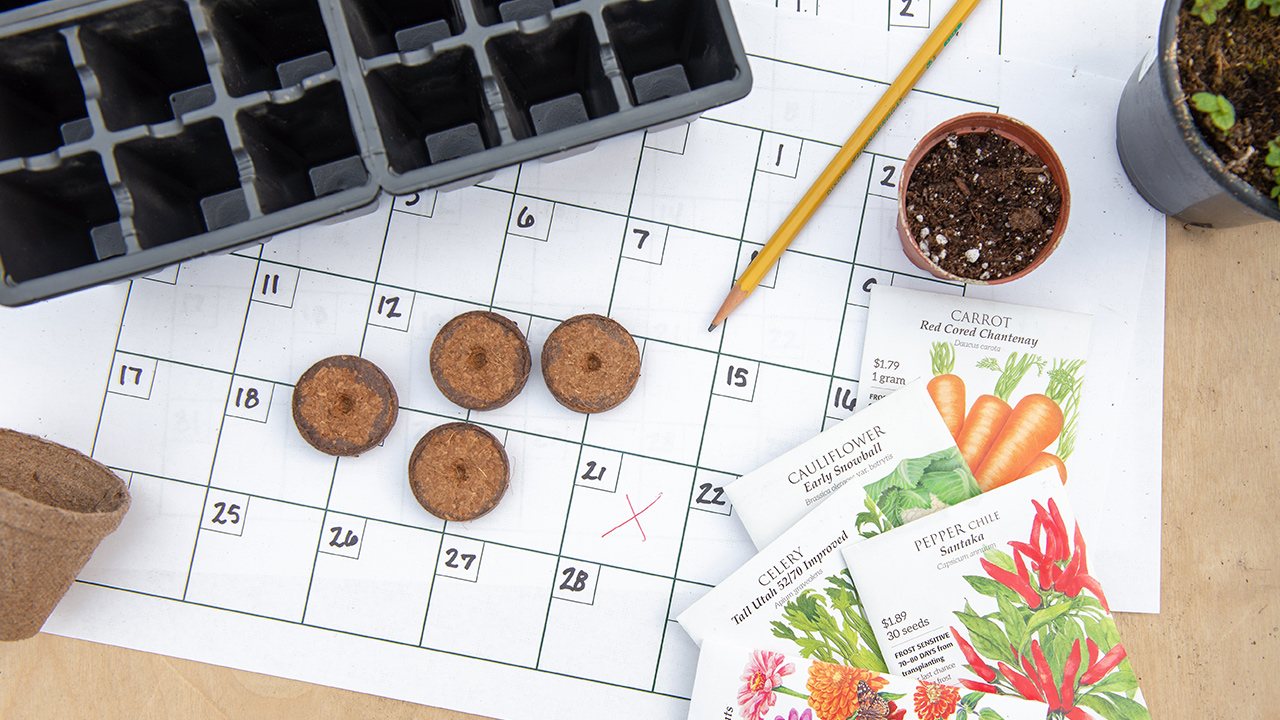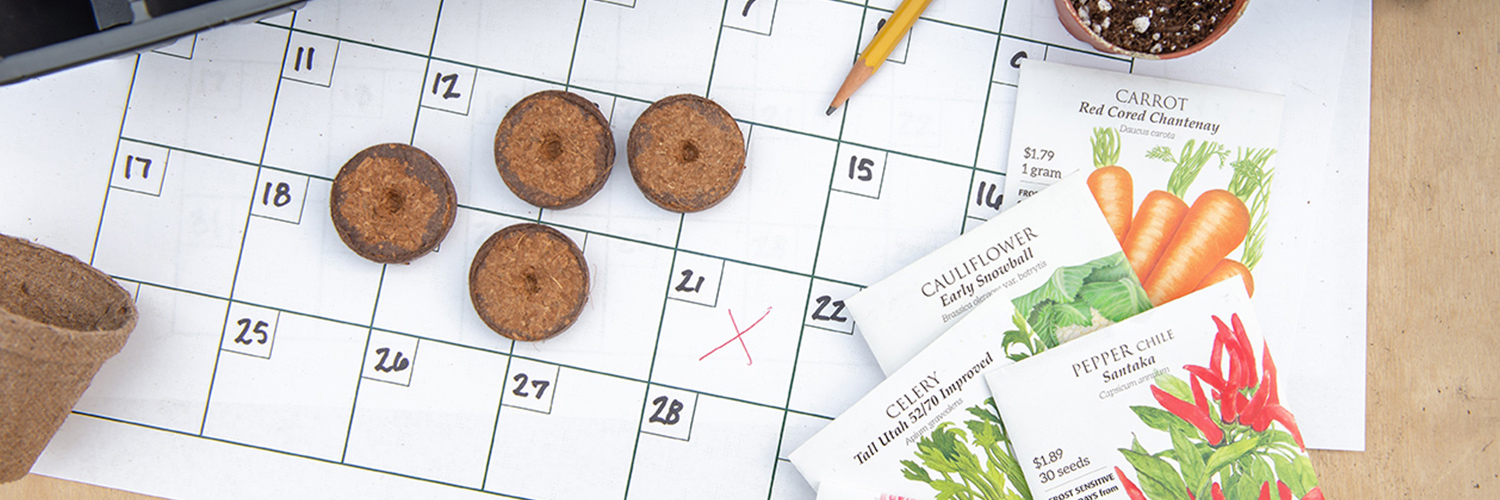
Starting flower and vegetable plants from seed is a practical and cost-effective way to increase the number and variety of plants growing in your summer garden. All kinds of vegetable, annual, and perennial seeds can be started indoors – some as early as right now. Here, we offer a calendar for the seeds that can be started in the coming weeks leading up to mid-May – our last average frost date here in Omaha, and the time when your baby plants can finally go outside. We also share a few tips to get your seeds off to a healthy start in your indoor garden.

When to Start
To determine the best time to start your seeds indoors, check the back of the seed packet to see how many weeks the seed needs to germinate and grow before it’s transplanted. Using that number, count backward on the calendar from the average last frost date – that’s May 15th in our area. Here’s a general guide listing some of our garden favorites by the number of weeks needed to start them indoors – along with the best time to start them here in our area.
Nine to Twelve Weeks / Late February to Early March
- Begonia
- Cauliflower
- Celery
- Dill
- Eggplant
- Parsley
- Peppers
- Petunia
- Snapdragon
- Thyme
Six to Eight Weeks / Mid-March to Late-March
- Cabbage
- Chive
- Climbing spinach
- Marigold
- Mint
- Oregano
- Sage
- Sweet Pea
- Tomato
- Zinnia
Four to Five Weeks / Early April
- Basil
- Broccoli
- Brussels sprouts
- Butternut squash
- Cucumber
- Kale
- Lettuce
- Melon
- Peas
- Radish
- Summer squash
- Zucchini
Two to Three Weeks / Mid- to Late-April
- Beets
- Gourds
- Spinach
- Swiss Chard
And some flowers and vegetable seeds do just as well or better if you wait to sow them directly outdoors when spring arrives. This might be because they‘re able to tolerate early-spring temperatures, they mature relatively quickly, or they simply don’t tolerate transplanting well.
- Carrot
- Chive
- Cilantro
- Corn
- Cucumber
- Gourds
- Lettuce
- Melon
- Peas
- Pole Beans
- Radish
- Squash
- Sunflowers

Quick Tips for Seedling Success
Containers and Soil
- Clay or plastic pots work well for seed-starting as long as they’re clean and drain well.
- Peat pots and compressed peat pellets are handy options because they can be planted directly into the ground when it’s time to go outside, minimizing root damage from transplanting.
- When planting your seeds, choose a soil mix designed especially for seed-starting – it’s loose, well-drained, and finely textured to support those tender new roots. A professional potting mix for houseplants is another option.
- And consider setting your pots on a heat mat too – the gentle warmth encourages faster, healthier root development.
Water
- Keep the soil mix consistently moist but not soggy – overly wet soil promotes fungal diseases, particularly one known as “damping-off.”
- Avoid using softened water – it contains salts that can be harmful to sensitive seedlings. Instead use distilled water or bring water in from the outside tap – just be sure to warm it to room temperature before giving those babies a drink.
Light
- After germination, place the seedlings in a bright, south window where they receive direct light throughout the day.
- If direct light isn’t available in your space, place a fluorescent or grow light about six inches above the plants for fourteen to sixteen hours a day. Just be sure to adjust the height of the light as the seedlings grow taller.
Air Circulation
- An oscillating fan set on low keeps the air gently moving around the seedlings and prevents disease. The light breeze also strengthens the stems as they develop.
Fertilizer
- After the seedlings show six to eight true leaves, you can apply a gentle fertilizer formulated for starter plants – our Plant Care team can show you which one. Or you can dilute a regular liquid fertilizer to half strength too. African violet fertilizer is another gentle option.

Start Your Spring Garden Today
Starting seeds indoors is the perfect way to get a jump-start on our gardens for a productive spring. Come see us in the Greenhouse – we have all the seeds and supplies you need to get started, and we’d love to help answer any questions you might have too.


